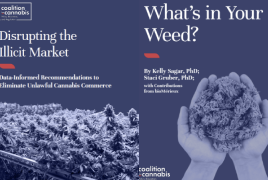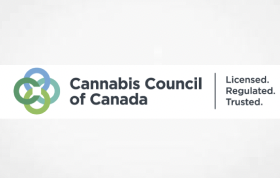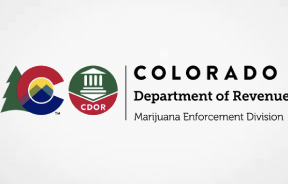We were prompted to write this Post by the publication of an article explaining some of the reasons California’s cannabis tax collections fell so far behind projections. The article suggests other states should study California’s experience in planning legislation and regulation. We agree. Other states should carefully study California’s foray into the regulation of its cannabis industry. Other states may profit from those actions California took that were prudent and take heed of the several grievous errors California made.
Other states should recognize the unique circumstances of California’s cannabis industry when regulation arrived. Cannabis regulation came to California through a unique route that does not apply to other states. Other states will begin cannabis legalization and regulation with a relatively clean slate compared to California. Other states also have the advantage of far fewer self-proclaimed cannabis experts.
We generally agree with the article. The analysis in the article, however, fails to discuss some of the reasons California’s regulation of its cannabis industry has proved a disaster on so many fronts, particularly with respect to cannabis tax revenue and administrative costs.
The article is: https://www.zerohedge.com/news/2019-01-16/california-expected-1-billion-tax-sale-recreational-marijuana-what-actually.
California’s cannabis tax shortfall and its administrative cost overruns were predictable. The numerous other issues that have arisen in connection with California’s implementation of cannabis regulation were also predictable. These problems are the product of the application of sound concepts by talented individuals who failed to carefully examine the premises for their regulatory decisions. The cautionary remarks in the Report of the Blue Ribbon Commission led by now Governor Gavin Newsom were largely ignored in the rush to regulate California’s cannabis industry.
California had a mature cannabis industry when regulation first appeared on the scene. California’s cannabis industry has been growing and maturing since the late ‘60s when many California hippies fled to Northern California and other remote locations to drop-out. Growers in Humboldt County skirmished with United States marines in the ‘80s. In the ‘90s California enacted Proposition 215. California has had a quasi-legal, semi-organized medical cannabis industry for over 20 years. It is noteworthy that the Harborside and the Alternative Care cases that generated so much attention in December of 2018 involved solely medical cannabis sales. The tax years at issue in these years preceded all California regulation. A substantial portion of the reasoning in these two cases was rendered moot by the regulatory regime California established effective January 1, 2018. Until 2015 all cannabis regulation in California was local except for the decision of the California Board of Equalization to impose Sales Tax on medical cannabis sales.
California’s missing cannabis tax revenues are not missing because California’s underground commercial cannabis industry did not pay cannabis taxes. Those individuals who conduct business in California’s underground commercial cannabis industry pay little, if any, taxes of any sort. A substantial number of these potential taxpayers have continued to conduct business in California’s underground cannabis industry because California made it so difficult for these potential taxpayers to migrate into the legal commercial cannabis market. The failure of California to make it easy for those individuals who were already involved in California’s cannabis industry to transition into a regulated commercial cannabis industry was a costly error.
California focused on developing regulations to control and track cannabis from seed to sale, to make this regulated industry to pay the costs of regulation, and to generate tax revenue. California’s focus on these points has gone a long way toward killing the goose that was laying golden eggs. California did not devote enough attention to enticing its established underground industry into joining in a regulated cannabis industry. California’s underground cannabis industry has divided into three groups of unknown proportions: those who have given up and moved on; those who will remain underground; and those who are trying to determine how to survive in a regulated environment.
While California’s existing cannabis industry has struggled with coming in from the cold, carpet-baggers and business sharks have descended on California’s cannabis industry like a plague of locusts. The tax revenue shortfalls and shifting legal cannabis sales projections evidence the abysmal failure of California to bring its underground cannabis industry into a regulated commercial market. Cannabis tax collections fell far short of projections. The number of licensed cannabis businesses is even farther behind projections.
For the foreseeable future California will have a substantial underground cannabis industry. As a consequence of Proposition 215, and the preservation of Proposition 215 in the passage of Proposition 64, a substantial underground cannabis economy will exist in California for the foreseeable future. The right of Californians to enjoy cannabis is enshrined in the California Constitution. Backyard grows that distribute to friends and family will exist in California for the foreseeable future. The California Constitution and a failed thirty-year war of drugs guarantee California will have a substantial underground cannabis industry for the foreseeable future.
We believe California may be able to get 70%-80% of the total cannabis production in California into the legal medical and recreational cannabis marketplace. California’s regulators need to wake up and smell the roses. California must concentrate on making it easy and profitable for cultivators to sell cannabis into the commercial cannabis market, including cannabis that flows from backyard grows into the commercial market. It must be easy for enterprising retirees to supplement Social Security with a few pounds from the back yard. California should consider it has established a model regime for regulated medical and recreational cannabis commerce if all significant cultivation sites by size are licensed, and all commercial medical and recreational cannabis is processed, packaged, transported, and delivered by licensed cannabis businesses.
California can accomplish far more within the existing legal framework than it has accomplished to date. California will never wholly eliminate outlaw cannabis cultivation. As long as there remains a substantial differential between cultivation costs for cannabis and street value of cannabis in the underground market, some will take the risk of breaking the law. Lower taxes and more enforcement are partial solutions. The reason lower taxes and more enforcement are only partial solutions provides a guide for more effective regulation.
Marketplace pressures will ultimately determine the size and shape of California’s underground cannabis market. The street price of cannabis will generally be in the range of 40%-60% of the dispensary price for the same product. California cannot significantly shrink its underground cannabis market unless it directs its efforts toward keeping the street price as close as possible to 60% of the dispensary price. Lower taxes and judicious enforcement will contribute. Far more can be accomplished, however, by making it easier for the underground cannabis industry to become part of the regulated industry.
One step California can take to reduce regulatory costs is to butt out of matters that should have been left to local control – land use and health and safety. California has regulated in areas in which it should have limited its involvement to principles and left the details relating to land use and health and safety to local jurisdictions.
Another step California can take is to encourage the distribution of medical cannabis. A significant differential will exist for the foreseeable future between the retail price of medical cannabis as compared to the retail price of adult-use cannabis as a consequence of California’s tax laws. This differential may increase when the federal tax laws relating to cannabis change. California has erroneously failed to encourage the distribution of medical cannabis. California should encourage the distribution medical cannabis. Reduced retail prices in the open market are the most effective way of shrinking the underground market. If the retail street price is less twice the bulk price demanded by cultivators, the potential profit will not justify the risk for many underground distributors.
Another step California can take is to encourage Cannabis Cooperative Associations (“CCAs”). CCAs provide a more financially efficient structure for the distribution of medical and adult-use cannabis in California. We will discuss CCAs more extensively in subsequent Posts.



















